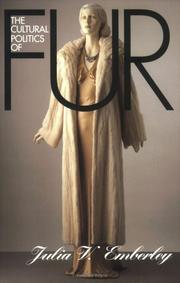Check nearby libraries
Buy this book

Fur has been sparking controversies ever since sumptuary laws marked it as a luxury item and as a sign of medieval class privilege. Drawing on wide-ranging historical and contemporary sources, Julia V. Emberley explains how a material good has become both a symbol of wealth and sexuality, and a symptom of class, gender, and imperial antagonisms.
Emberley documents the 1980s confrontations between animal rights activists and native peoples that pitted Lynx, the organization responsible for the high-profile anti-fur ads in Great Britain, against Inuit and Dene societies' claims for a livelihood based on the selling and trading, consumption and production of animal fur. From colonial fur trading to twentieth-century globalization of the fur industry, Emberley analyzes the cultural, political, material, and libidinal values ascribed to fur.
Check nearby libraries
Buy this book

Previews available in: English
| Edition | Availability |
|---|---|
| 1 |
aaaa
|
| 2 |
eeee
|
Book Details
Edition Notes
Includes bibliographical references (p. 235-242) and index.
Classifications
The Physical Object
Edition Identifiers
Work Identifiers
Community Reviews (0)
History
- Created April 1, 2008
- 16 revisions
Wikipedia citation
×CloseCopy and paste this code into your Wikipedia page. Need help?
| July 13, 2024 | Edited by MARC Bot | import existing book |
| September 17, 2021 | Edited by ImportBot | import existing book |
| November 25, 2020 | Edited by MARC Bot | import existing book |
| August 23, 2020 | Edited by ImportBot | import existing book |
| April 1, 2008 | Created by an anonymous user | Imported from Scriblio MARC record |












